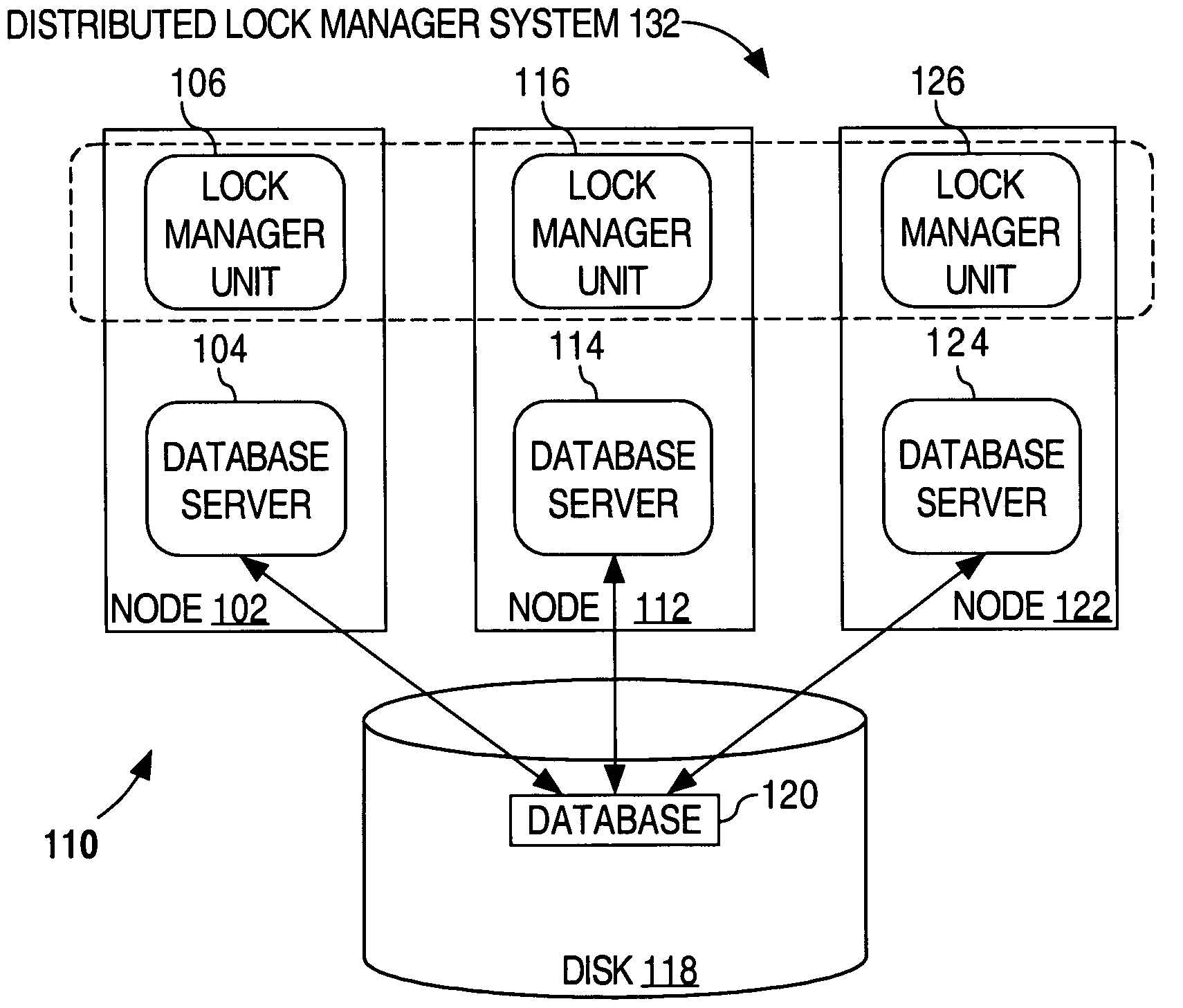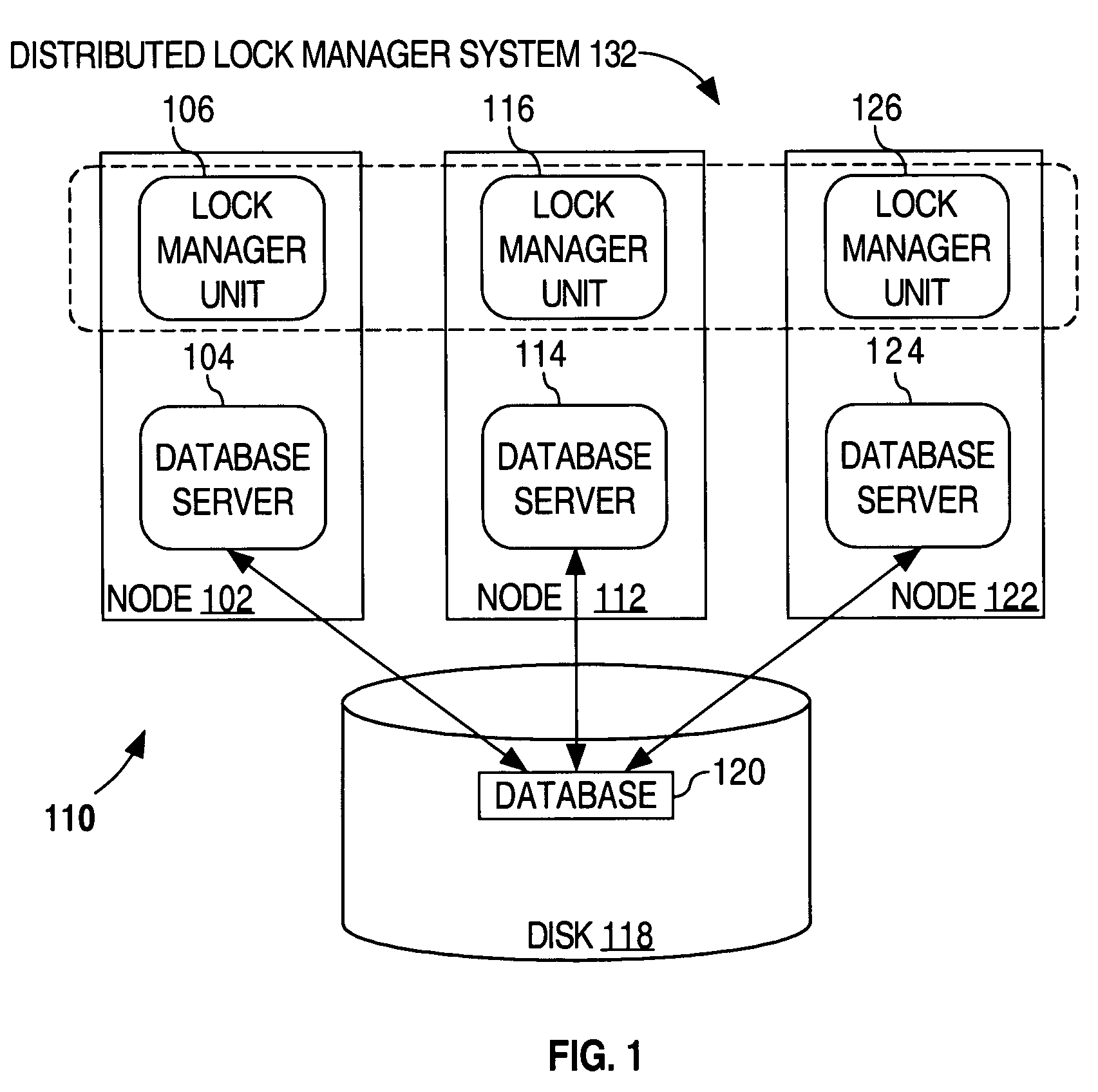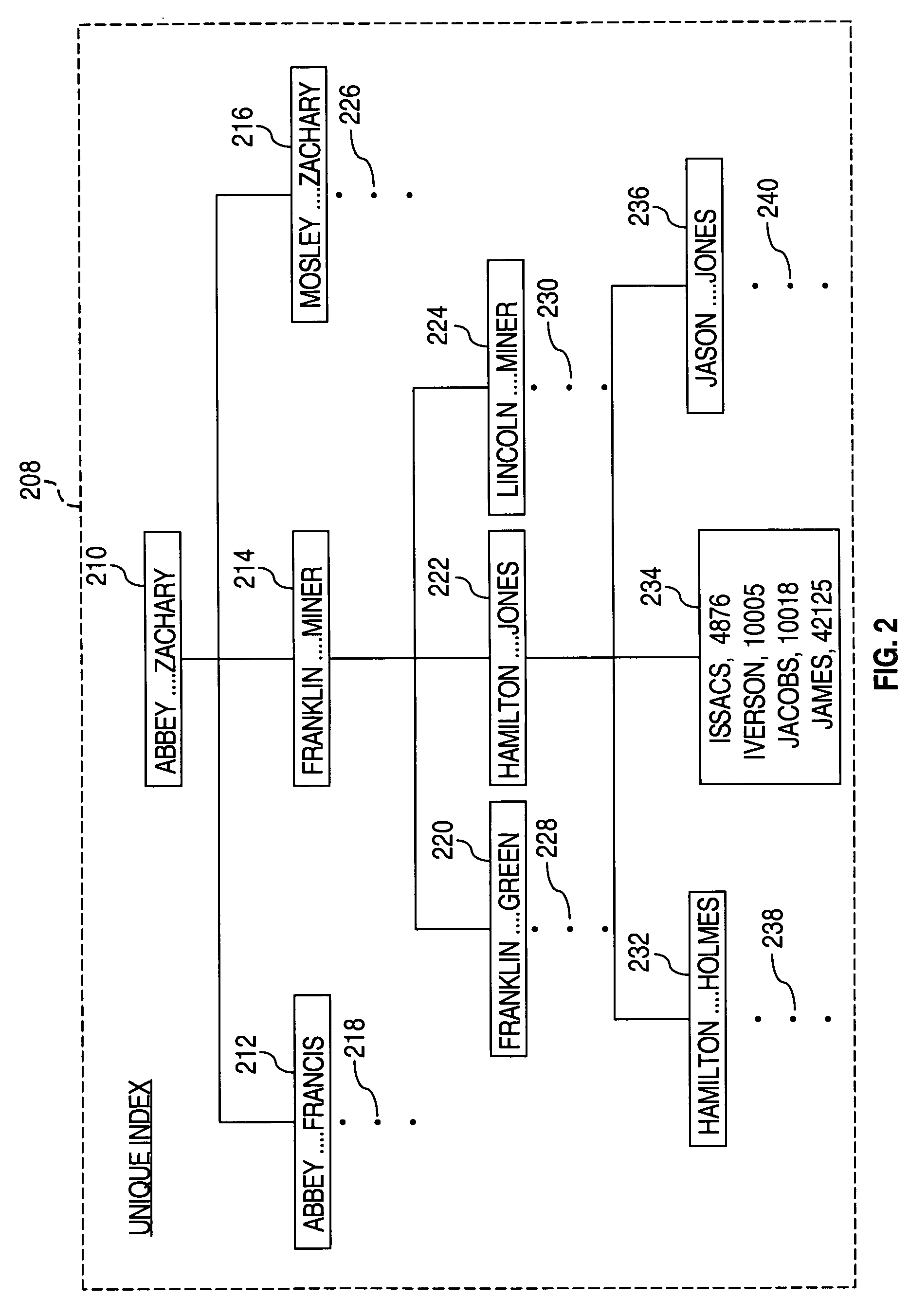Semantic response to lock requests to reduce coherence overhead in multi-node systems
a multi-node system and lock technology, applied in the field of lock management, can solve the problems of lock contention, many resources may not be accessed in certain ways, and the blockage process may not be able to proceed,
- Summary
- Abstract
- Description
- Claims
- Application Information
AI Technical Summary
Benefits of technology
Problems solved by technology
Method used
Image
Examples
Embodiment Construction
[0052]A method and apparatus for lock management is described. In the following description, for the purposes of explanation, numerous specific details are set forth in order to provide a thorough understanding of the present invention. It will be apparent, however, that the present invention may be practiced without these specific details. In other instances, well-known structures and devices are shown in block diagram form in order to avoid unnecessarily obscuring the present invention.
Overview
[0053]In conventional lock management, a lock request is issued to a lock manager for a lock, and the lock manager returns a response about the lock request. The information provided by the response is typically limited to the status of the lock request; the response may indicate that the lock was granted, denied, or that the request had “timed out”. When the request cannot be granted, lock requests issued by conventional lock managers convey no information about the underlying cause that pr...
PUM
 Login to View More
Login to View More Abstract
Description
Claims
Application Information
 Login to View More
Login to View More - R&D
- Intellectual Property
- Life Sciences
- Materials
- Tech Scout
- Unparalleled Data Quality
- Higher Quality Content
- 60% Fewer Hallucinations
Browse by: Latest US Patents, China's latest patents, Technical Efficacy Thesaurus, Application Domain, Technology Topic, Popular Technical Reports.
© 2025 PatSnap. All rights reserved.Legal|Privacy policy|Modern Slavery Act Transparency Statement|Sitemap|About US| Contact US: help@patsnap.com



